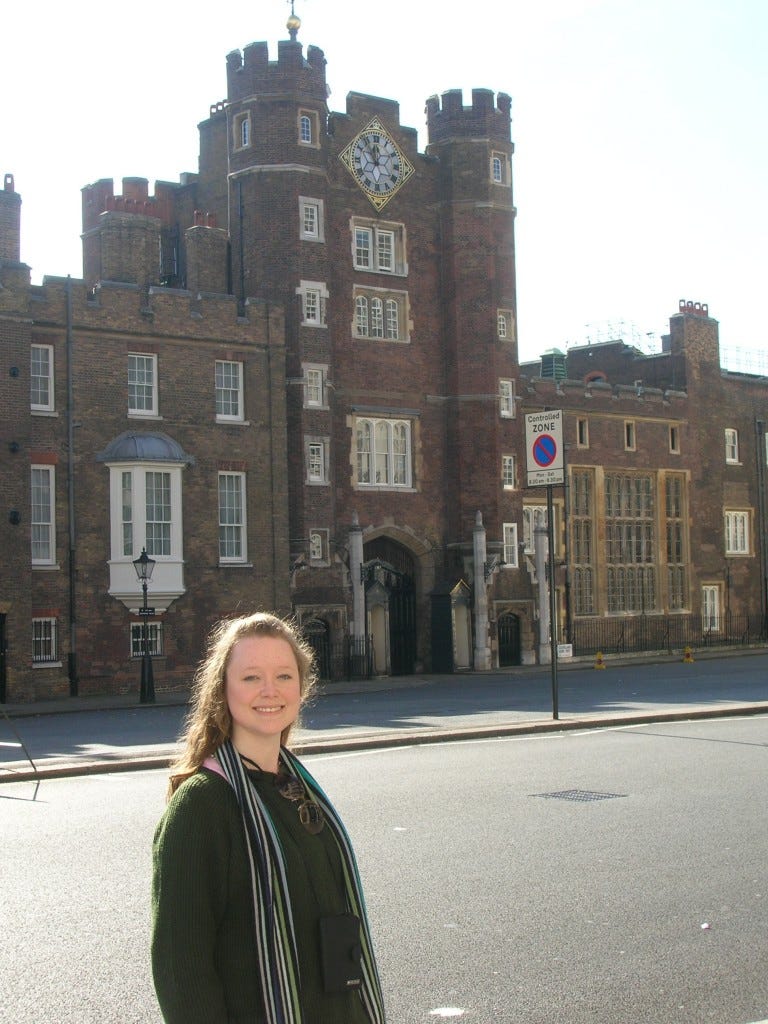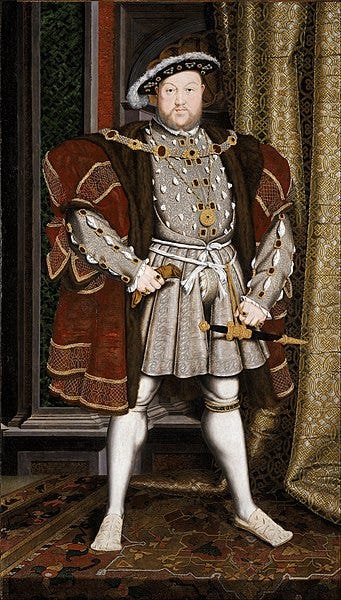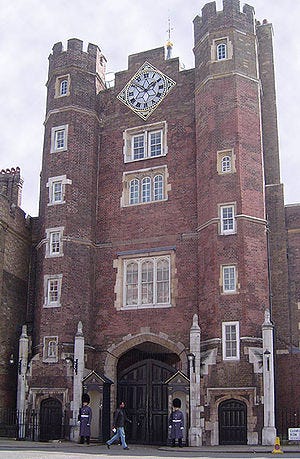The hearty St. James's Palace is a unique brick building with octagonal towers and star-embellished clock. It was originally the site of a hospital for female lepers. The name of the palace is derived from the hospital, named for St. James the Less, Bishop of Jerusalem.

The site was brought into the royal orbit when King Henry VIII acquired it from Eton College. He renovated the building into a 'magnificent and goodly house', making it the principal official palace of the Sovereign. Over time, St. James's has functioned as an official palace as well as a home, and sometimes it has been a private home only. Mary Tudor, Henry's daughter with Catherine of Aragon, preferred to use St. James's as a private residence as queen while conducting most official business at Whitehall. Today, Accession Councils normally meet in St. James's Palace.
The later Hanoverian dynasty used St. James's as both an official palace and residence until the purchase of Buckingham House. George III bought this London mansion for his wife, Queen Charlotte, which they used as their private family home. St. James's continued to function as an official palace for state occasions, formal court receptions, and grand balls.
When George IV ascended the throne, he was unimpressed with St. James's and instead converted Buckingham mansion to an elaborate palace. The king asked John Nash to carry out the work, and he did so to the tune of nearly half a million pounds. It was an astronomical sum in 1829 and cost Nash his job. When George's brother ascended the throne as William IV, he contracted Edward Blore to finish the work in a more conservative fashion - aesthetically and financially!
William IV was reluctant to move into Buckingham. He preferred Marlborough House, which was close to St. James's and was even linked to Marlborough itself via an underground tunnel. Eventually, William acquiesced and said he would agree to move into Buckingham Palace if the government wished it. Before he had to do so, he died.
William's niece and heir, Victoria, had no problem whatsoever with the ornate palace. After her accession in 1837, the new queen established the tradition of Buckingham Palace being the official London residence of the monarch. However, St. James's remained the formal "official palace of the Sovereign" and is the most senior royal palace in the United Kingdom. Even today, ambassadors presenting their credentials to King Charles III are formally accredited to the Court of St. James.
St. James's is currently the London base for several members of the Royal Family, including the King’s sister, Princess Anne as well as his Kent cousin, Princess Alexandra. The king’s former home, Clarence House, is part of the St. James complex which includes York House and Lancaster House. The palace is currently not open to the public.
More recently, the palace was the site of the transition between reigns. The Accession Council met in St. James's following the death of Elizabeth II and Charles was proclaimed king by the Garter King of Arms. The new monarch is proclaimed from the Proclamation Gallery overlooking Friary Court (over on the side, not shown).
Many thanks to Rolland Hopkins for the donation of his wonderful book The Royal Palaces of Britain by John Adair.
Thanks for reading Mandy on Monarchy! Subscribe for free to receive new posts and support my work.






